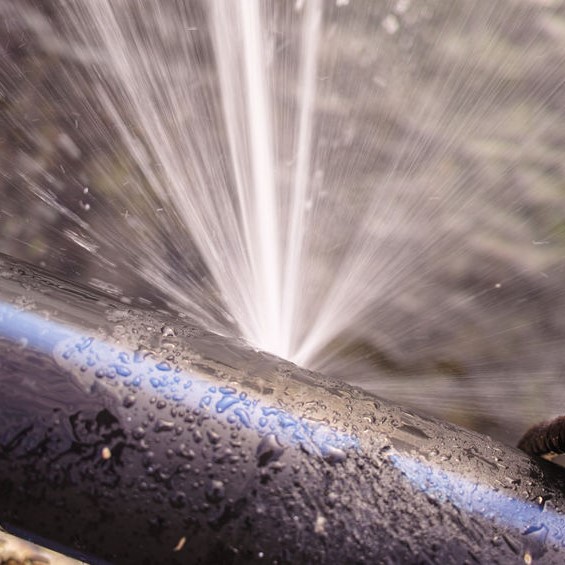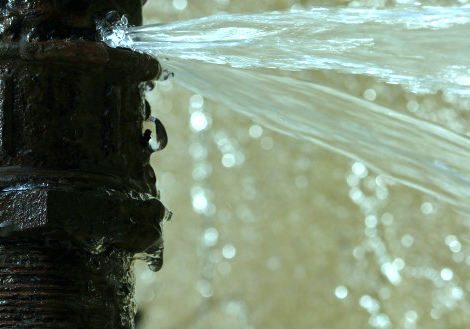Quick-Response Plumbing: Tips for Identifying and Dealing With Ruptured Pipes
Quick-Response Plumbing: Tips for Identifying and Dealing With Ruptured Pipes
Blog Article
Have you been looking for critical info concerning What to Know Before Installing a Dishwasher?

A burst pipeline is a significant emergency; you can just stand as you view water you pay a lot to reunite with the earth. In even worse situations, you notice a swimming pool on your kitchen area floor, which is a wonderful trip hazard, specifically if you have kids around. If the pipe that ruptured remained in your wall surfaces, problem: you may require to repaint that whole section.
Just how can a calamity like a ruptured pipe be stopped and handled? Well, by paying attention to your professional emergency plumbing technicians and complying with these regulations.
How do I understand when my pipelines have burst?
Rising and fall water pressures
Pipes do not simply burst in a day. You may have discovered that your kitchen area tap or shower does not run instantly when you transform the tap. It may stop briefly for a few seconds and afterwards blast you with even more pressure than typical.
In various other instances, the water might seem regular at first, then decrease in pressure after a few secs.
Contaminated water
Lots of people think a ruptured pipe is a one-way outlet. Rather the contrary. As water spurts of the hole or wound in your plumbing system, contaminants discover their method.
Your water might be contaminated from the source, so if you can, examine if your water storage tank has any kind of problems. Nevertheless, if your alcohol consumption water is provided and cleansed by the local government, you need to call your plumber immediately if you see or smell anything funny in your water.
Puddles under pipelines and also sinks
When a pipeline ruptureds, the discharge creates a puddle. It might show up that the pool is growing in size, as well as despite how many times you wipe the puddle, in a few minutes, there's one more one waiting to be cleaned up. Often, you might not have the ability to map the pool to any kind of noticeable pipelines. This is a sign to call a professional plumber.
Wet wall surfaces and also water discolorations
Prior to a pipeline ruptureds, it will certainly leakage, the majority of times. If this relentless dripping goes undetected, the leakage may finish right into a vast laceration in your pipeline. One easy way to avoid this emergency is to look out for wet walls ad water stains. These water stains will lead you right to the leak.
Untraceable dripping noises
Pipe ruptureds can take place in one of the most undesirable areas, like within concrete, inside wall surfaces, or under sinks. When your house goes silent, you may be able to hear an annoyingly persistent leaking noise. Even after you've checked your shower head and kitchen faucet, the trickling might continue.
Dear reader, the trickling might be originating from a pipe inside your walls. There isn't much you can do about that, other than inform a professional plumber.
Turn up the Heat
Set up followers to blow heat into cool spaces. Maintain the garage door closed. If you have lowered water circulation, warm the most vulnerable pipelines (normally in basements and crawl spaces or near outside wall surfaces) with a hair dryer. Leave the faucet on while you use warm. As you melt ice, the circulation will increase. To stop pipes from freezing, shield your walls.
Start Removing the Water
Get hold of the mop, containers and a store vacuum to start to remove the water since you definitely don't want it soaking right into whatever else in the house. And also, a quick tidy up will certainly minimize the possibilities of something obtaining moldy.
What do I do when I spot a ruptured pipe?
Your water meter will certainly continue to run also while your water wastes. To lessen your losses, find the major controls and turn the supply off. The water pipe are an above-ground structure beside your residential property.
How to Fix & Detect a Leaking Pipe
How Do I Know if a Pipe is Leaking?
Leak detection tests can help you determine if your pipe has a leak. Even if you don’t see an apparent leak, you should still conduct leak detection tests regularly to save water and money—and prevent major damage to your home.
Water meter. It can be helpful to figure out what your usual water meter usage numbers are and then monitor them regularly. To monitor your meter, first, turn off all water faucets in your home. Check the meter and write down the numbers. In a few hours, check the meter again. If the numbers have changed, you have a leak. Water gauge. Use a water gauge to test your water pressure. Your showerhead should produce a certain amount of water pressure based on its model and design. If the pressure is lower than it is supposed to be for that specific showerhead, your home likely has a leak. Puddles. Look inside your bathroom, laundry, and kitchen sink cabinets. Puddles around the cabinets or around toilets, tubs, showers, and washing machines indicate the presence of a leaking pipe. You may also notice loose tiles, peeling or flaking paint, or mold caused by water accumulation. Napkin test. Even if you don’t see any puddles, you may still have a leak. You can test for water leaks in the bathroom, laundry, and kitchen by wiping below-sink connections with a napkin, paper towel, or piece of toilet paper. If it becomes damp, you probably have a leaking pipe under the sink. Discolored walls. Walls that are discolored—usually with brown or yellow stains—or bulging might mean that they have been impacted by water damage caused by a leaking pipe. Smell. A leaky pipe will create sitting water, and over time, that water may develop a musty smell. If your home smells musty, but you can’t locate the source, it may be due to a leak. Steps for Fixing a Leaking Pipe
A leaky drain can be remedied by tightening the pipe base, replacing the drain seal, caulking the rim, and tightening the pipe nut. Similarly, a leaking toilet pipe can be treated by tightening the packing nut. You may also need to replace the valve. A leaky faucet may just need tightening or replacement of the washers. If that doesn’t work, consider replacing your faucet. If your pipe has a hole in it, you may want to use a pipe leak sealer or pipe leak tape. This quick fix for water pipe leaks can also temporarily fix a copper pipe leak. https://www.ahs.com/home-matters/quick-tips/how-to-tell-if-pipes-are-leaking/

As an avid reader about How to Prepare for Your Dishwasher Installation, I think sharing that excerpt was a great idea. Appreciated our write up? Please share it. Help another person discover it. I appreciate reading our article about How to Prepare for Your Dishwasher Installation.
Book Appointment Now
Report this page